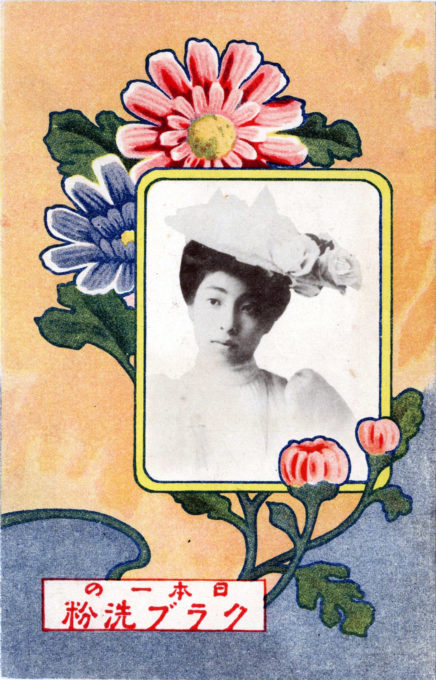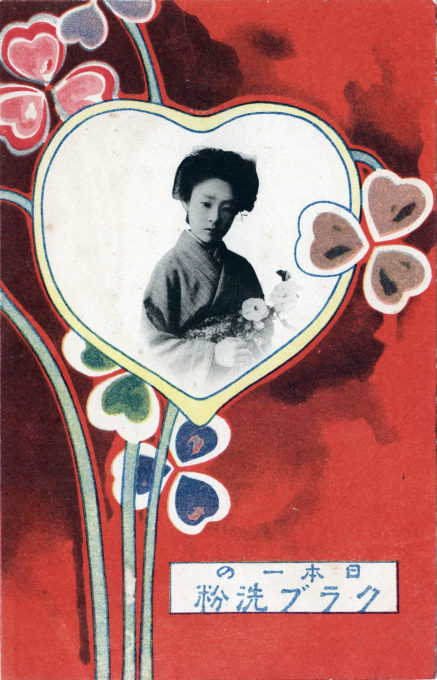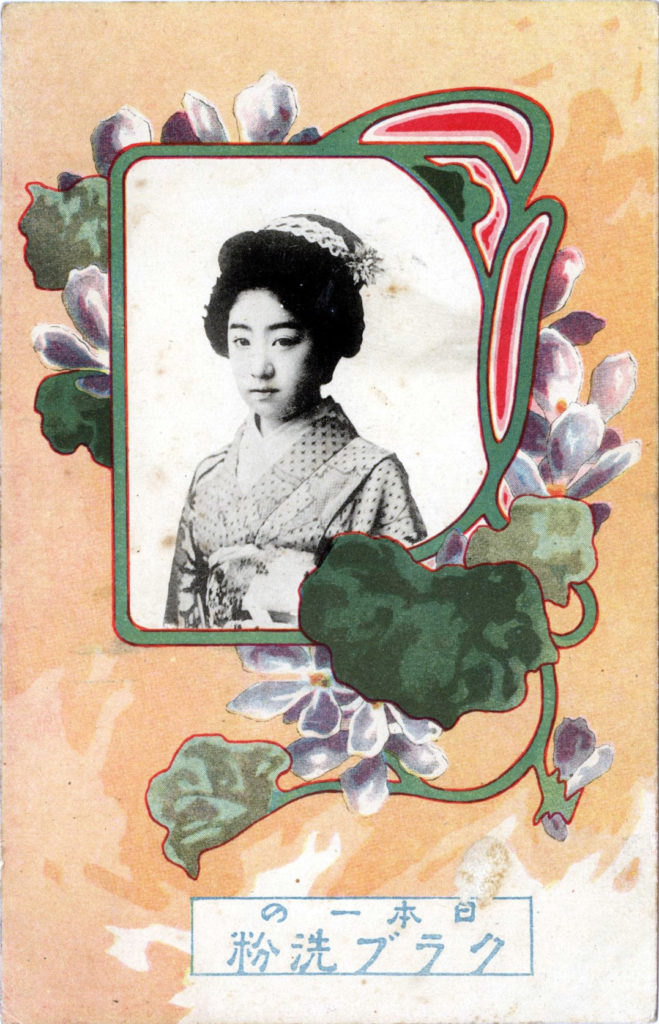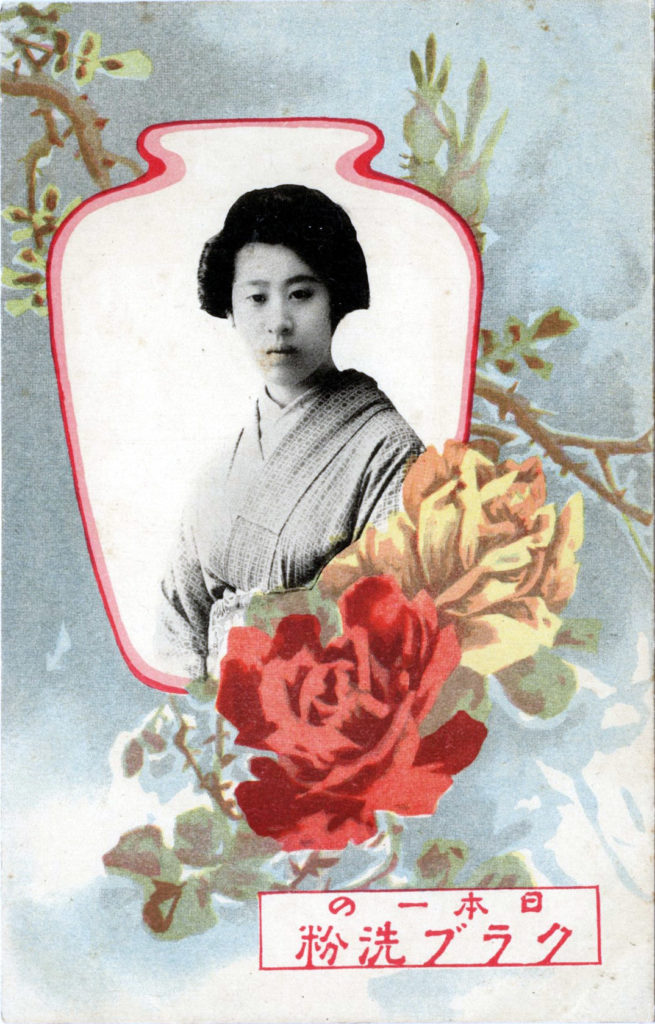See also:
“Calpis” beverage advertisement, c. 1919.
Singer Sewing Machine Co. advertising postcard, c. 1920.
Kodak Verichrome Film & “Vest Pocket” Camera, Japan, c. 1932.
“As Japanese-manufactured soap and cosmetics entered Hawai’i’s Japanese American consumer market, the advertisements for those products not only spread the homeland perception of skin color, but also a sense of racial and cultural superiority. From this perspective, the reference to shizenbi (‘natural beauty’) in Japanese American advertising not only implied a healthy-looking complexion, but also carried essentialist overtones.
“At first glance, advertisements for Club soap, known for its aggressive advertising campaigns in prewar Japan, seem to appeal to consumers’ concerns with quality, efficiency, and convenience. They assured customers that Club soap was ‘gentle to the skin’ and best used with other products manufactured by the same company. Upon further scrutiny, Club’s promises to enhance beauty of Japanese women highlighted the beauty of their ‘natural’ complexion and promised to restore whiteness to their skin.
“… Club soap, like its foreign competitors, was targeted at Japanese women who wished to emulate Western lifestyles. Ads used such terms as gendai (‘modern’) and bunkateki (‘cultured’) to appeal to the fashion-conscious consumers of the urban middle class. The domestic production of luxury soaps transformed the beauty industry into something more affordable and readily accessible for Japanese women without compromising on Western style design or value as a status symbol. It also signified a meshing of cultures, in which Western products were selectively borrowed and adapted to suit Japanese needs and conditions.”
– Creating the Nissei Market: Race and Citizenship in Hawai’i’s Japanese American Consumer Culture, by Shiho Imai, 2010
- “Club Washing Powder” [クラブ洗粉] advertising postcard, c. 1910.
- “Club Washing Powder” [クラブ洗粉] advertising postcard, c. 1910.





